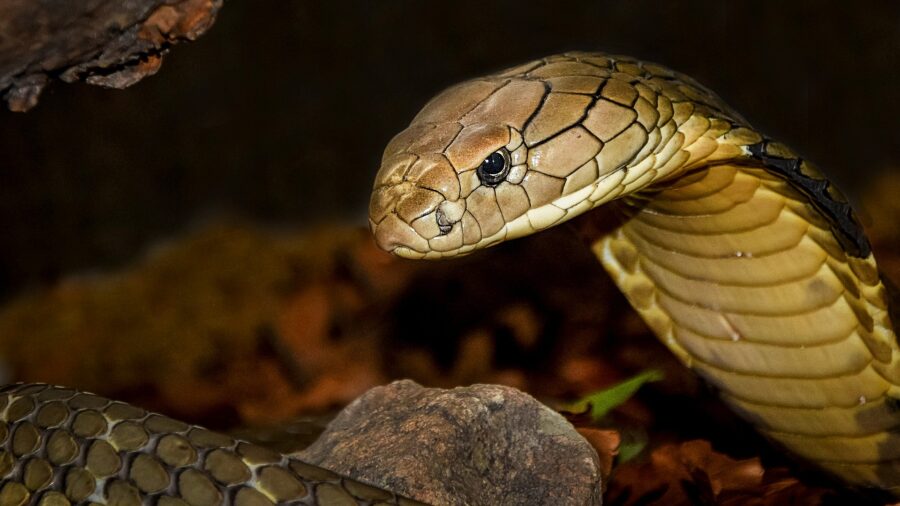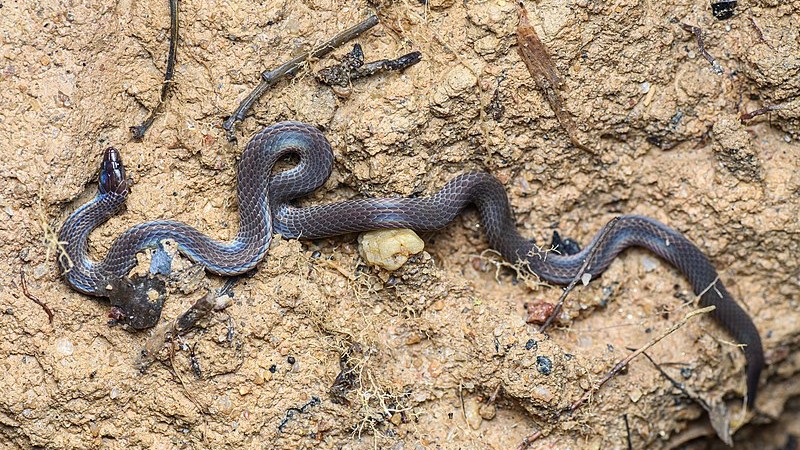See A Snake Demonstrate Rare Technique To Avoid Danger: Cartwheels
The dwarf reed snake will roll up and cartwheel away from danger.

There’s a good chance you’ve seen a cartoon featuring a snake that, at some point, decided to roll into a circle and start moving that way. Researchers in Malaysia made history when they published a paper in Biotropica identifying a species that will perform cartwheels to escape danger. Thanks to footage uploaded to YouTube, we can all see how strange animals can be.
Herpetologist Evan Seng Huat Quah once saw a dwarf reed snake launch itself into the air and roll away, but at the time, he had no means to record the encounter. Years later, on a separate research expedition, his team managed to capture a dwarf reed snake and were able to document the strange behavior. One year ago, similar footage was uploaded to YouTube, allowing everyone to see a cartoon come to life.
The secondary footage confirmed what Quah’s team saw in their lab, leading to a further hypothesis that multiple species may roll, but due to the small size and easily-spooked nature of the dwarf reed snake and its contemporaries, humans struggle to catch the moment. It also doesn’t help that, as with other species known for rolling, it’s not a primary mode of transportation.
Dwarf reed snakes will slither like any other snake, and if given the option, they may also hitch a ride on a plane. Cartwheeling is likely a last-ditch effort to evade predators, either by out-running them or confusing them. As far as emergency evasive plans go, there’s worse out there; re-enacting Looney Tunes beats playing dead.

Other rollers, such as armadillos, hedgehogs, and the golden wheel spider, will tighten up and let gravity move them. This type of passive rolling, limited to downhill only, differs from the dwarf reed snake’s behavior caught on camera. By curling up while airborne, the snake is actively pushing itself, which requires significantly more effort and allows for sudden movements that, if they confuse us, likely confuse their common predators, including coral snakes and birds.
Nature is vast, strange, and forever unknowable, from pink dolphins to deadly sloth bears and now cartwheeling snakes. Thanks to modern technology, it’s now possible for anyone, anywhere, to capture animal behavior. Considering what we’ve seen already, it raises the question, what’s still out there for us to discover?
For Quah and his team of researchers, the hope is that more strange snake behavior will be revealed by sharing information with other researchers around the world. Though this research may not seem important, it helps us understand snakes better and, by extension, the world around us, which may benefit humans directly. Certain types of snake venom have proven to be helpful in clotting blood, while others prevent clotting, and though mixing the two would be disastrous on their own, they can prevent major health issues in humans.
So while the thought of a snake in real-life putting its tail into its mouth and rolling away like a tire is humourous and, frankly, cute, it’s important to research the often misunderstood animal.












